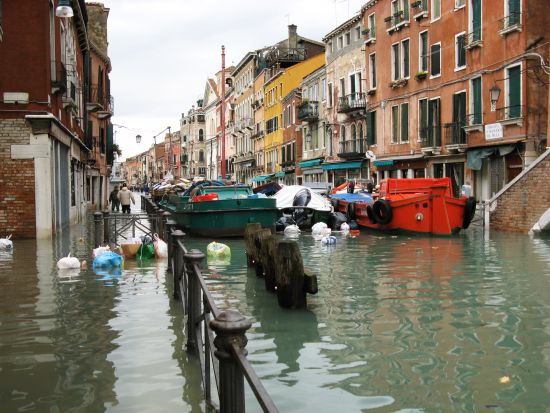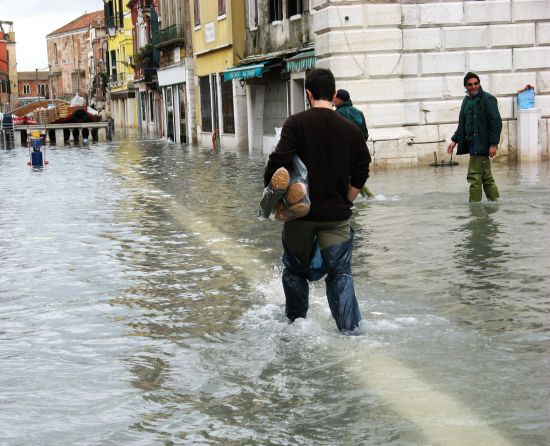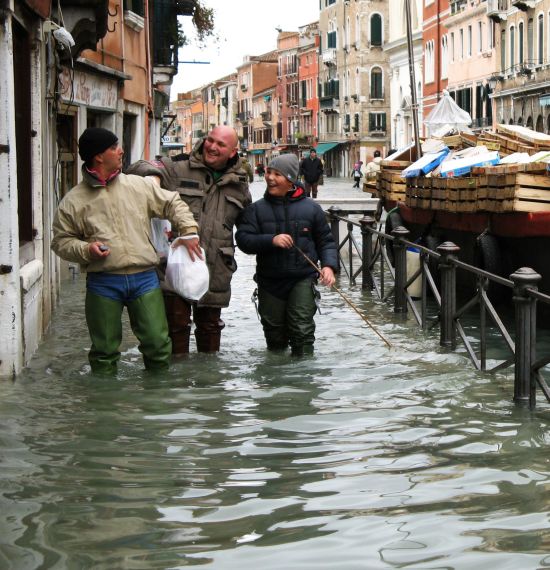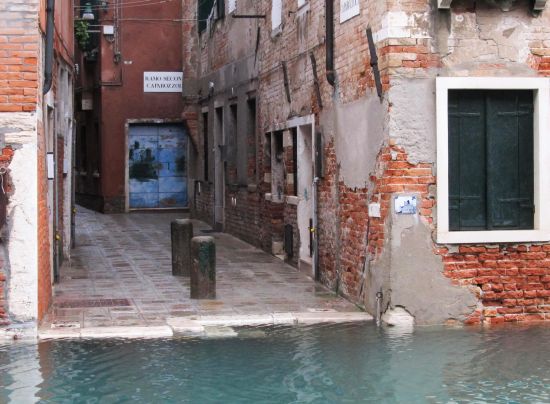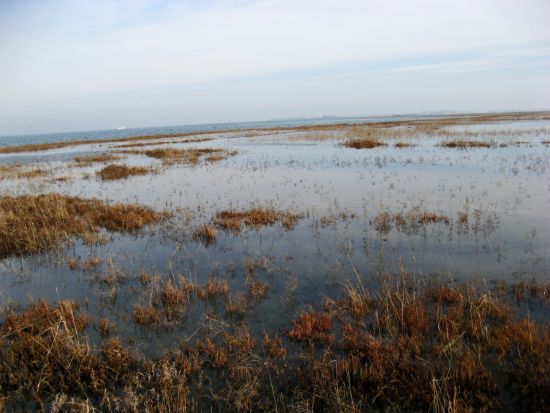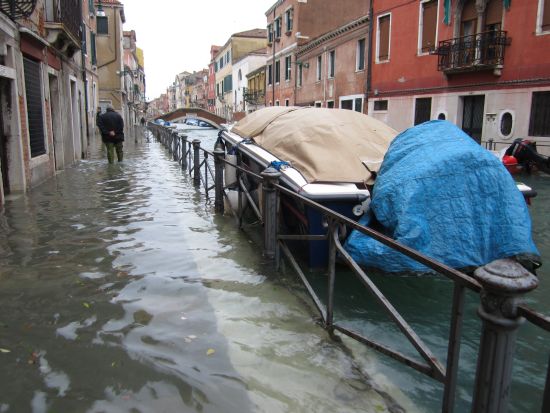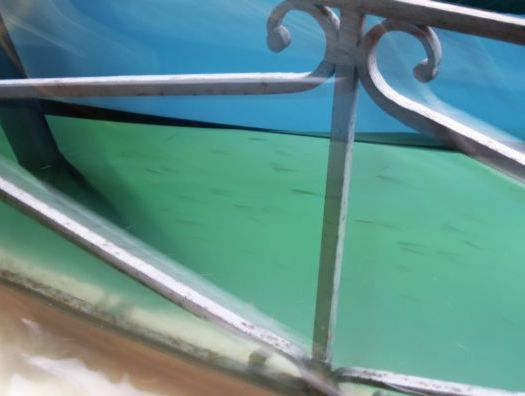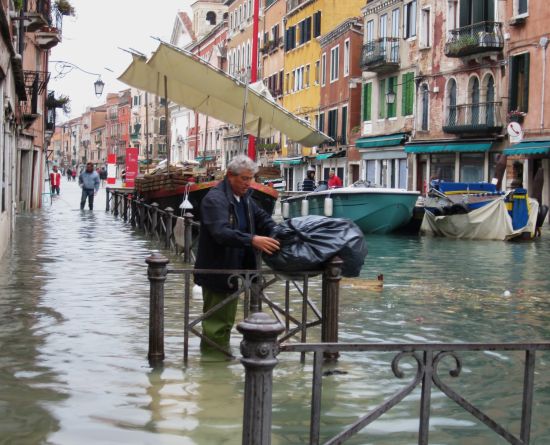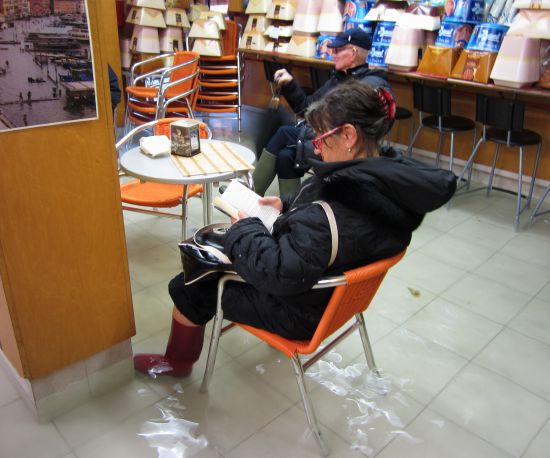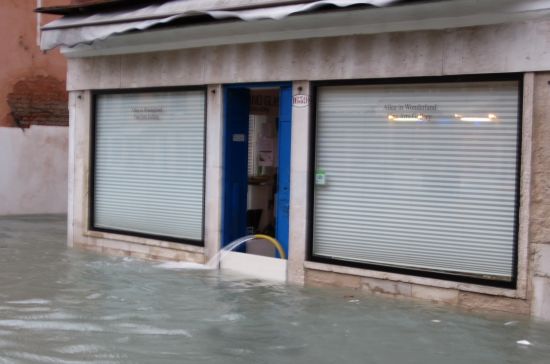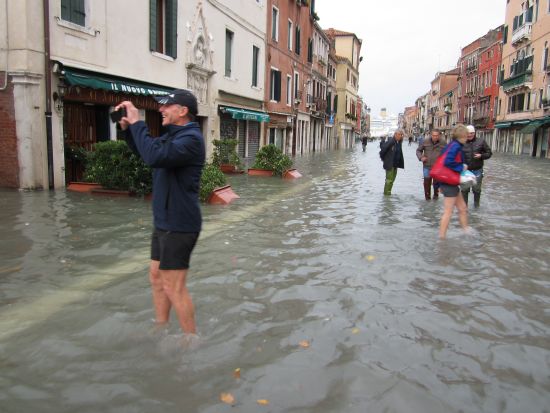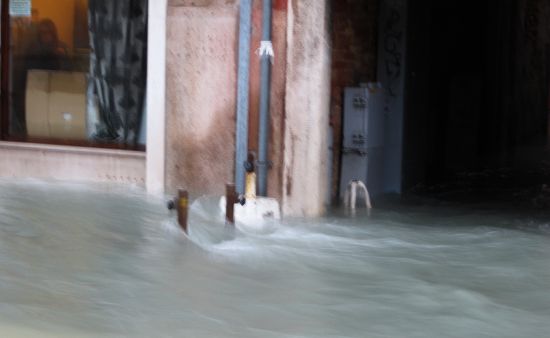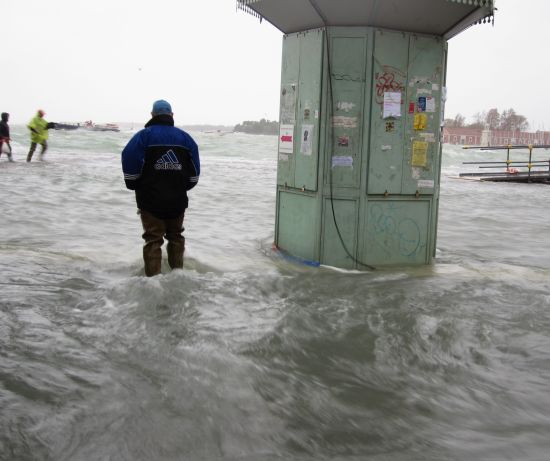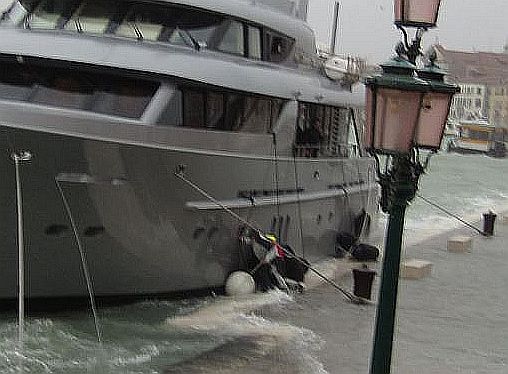The peak tide forecast for last night at 11:20 PM was 130 cm.
At around 8:30 we heard the siren, with three tones. Not a happy sound, but one that does not portend water in our house.
About an hour later, sirens again, with four tones. Not happy at all, though we still have a chance of staying dry. Evidently the scirocco had gotten stronger. In fact, we could (as usual in these cases) hear it making its customary deep roar out along the Lido’s Adriatic beaches.
At 10:00 PM, a look out the window revealed water ambling inland. It had just gone past our first step, which is fine because as long as it’s moving forward it’s not moving upward (at least, not much).
At 10:30 PM, another look showed that the water wasn’t ambling inland anymore. It was just sitting there, with a few little ripples here and there. And no longer did we hear the wind roaring, which meant the wind had either dropped or changed direction.
Reprieved! Because the fact that the tide was due to turn in less than an hour (an imprecise prediction, but that’s what we were going by) meant that at 10:30 the tide was already entering the phase known to us as “stanca,” or “tired.” Slowing down. Losing headway. Coasting in neutral. However you want to think of it.
Therefore the tide wouldn’t be rising much more, if at all, before it began to go out.
At 11:00 PM, the tide was visibly receding. Early! I’ll take it!
So, instead of getting water nearly up to our top step, as per the warning sirens, it didn’t even make it halfway up the first step. My guess is that it would have been a two-siren height, at best.
The traditional conundrum: Which is worse? When the Tide Center’s prediction turns out to be right? Or when it’s wrong?

I haven’t read today’s newspaper’s account of all this because they become pretty monotonous. One truly monotonous component is the assortment of complaints from people about how inaccurate the forecast was, and the weary reply from the Tide Center that with the few coins a year they’re allotted as financing, it’s a wonder they get anything done at all.
I’d like to add another viewpoint in support of the Tide Center, run by the exemplary Paolo Canestrelli, who has been dealing with this for decades. (I would bet money that when he retires — the prospect of which must be the one thing that keeps him going — he is going to go live in a yurt on the steppes of Outer Mongolia.)
Here is my viewpoint: Why cast blame on the Tide Center? It was established in the early Seventies in order to alert the city to possible exceptional high tides — a decision clearly inspired by the Infamous Acqua Alta (IAA, to me) of 1966.
But there had been plenty of high waters up until then. Venetians had grown up with it, and most of them could recognize the signs of impending high water. They didn’t need a siren to tell them what was going on.
Or did they?
I said “most of them.” Lino’s brother-in-law, Roberto, for some reason, seems to have been born government-tropic, leaning instinctively toward what officials say and not what his eyes transmitted to his very own brain. This was unfortunate, because Roberto lived on the ground floor below Lino’s apartment.
Lino remembers that on that fateful November 4 there had been heavy weather all day (wind, higher-than-usual tide, all the usual markers). He knew when the tide was supposed to turn, therefore he noticed immediately that it had not, in fact, turned. Which meant that six hours later, when it was supposed to rise again, it was going to begin rising from a much higher level than usual.
While he was evaluating all this, he looked up at the cable (phone? electricity?) strung high up across his street. He saw a rat running along it.
That’s when he knew it was time to start preparing for serious water.
So he went to his brother-in-law and said, “Hey Roberto, we’re in for really high water — we’ve skipped a tide turn and the water’s not going down. I’ll help you get your furniture upstairs.”
To which Roberto replied, “No no, nothing’s going to happen. The city (I don’t know what office that would have been back then) says that blah blah we’re going to be okay blah blah.”
To which Lino said, “Listen, it’s not looking good AT ALL. I will help you carry your things upstairs! Let’s get on it!”
To which Robert replied, “No no, blah blah they said nothing’s going to happen blah blah.”
To which Lino replied, “Suit yourself.”
And so, two days later, Roberto had to throw out virtually all of his furniture, which was so full of lagoon water it would never be usable again.
I wasn’t there, but I knew him years after this event, and he was still not the type to say, “Boy, did I ever screw up. Why didn’t I listen to you?” He was the type, of which there is now an over-supply, who would have blamed the city for having erred in its prediction.
It strikes me that people nowadays have come to use the Tide Center as a crutch. By which I don’t mean everybody should take a course in meteorology, or that the Tide Center is incompetent, because it isn’t.
What I mean is that there are too many variables in the weather (such as the wind suddenly dropping) for the Tide Center to keep up with, minute by minute, to ensure that every single person in Venice is going to know, every single minute, what to do.
There was a life before the Tide Center, and when there was acqua alta most people were well aware it was on the way. When Lino was a boy, people didn’t even wear rubber boots. Who had money to spend on boots? You went barefoot, as I occasionally have done.
Now there’s a Tide Center, and instead of helping people act more intelligently (its fundamental purpose), its mere existence seems to have given people an excuse to behave like quivering bewildered rabbits.
The Tide Center isn’t there to save you, people. Only you can do that.
